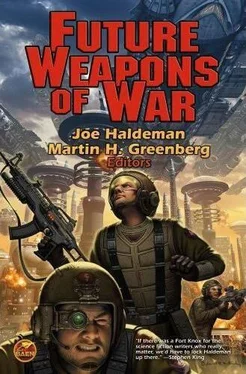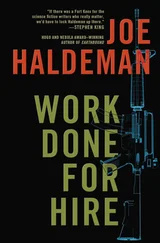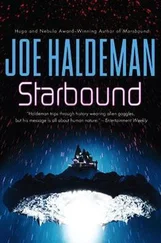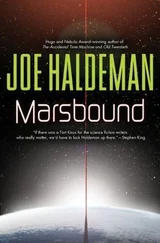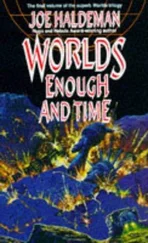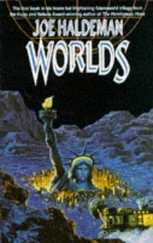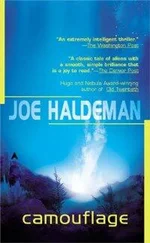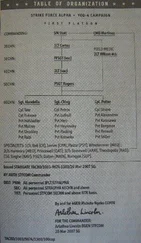There were the satellite flights: recon, distant early warning, intelligence-gathering, weather, communica tions and attack, both the overt systems and the black covert ones, cruising in an interweaving sphere of traffic patterns around the planet. There were the ground bases: the launch facilities, the ground tracking stations, the scepter pads and the hypersonic glider squadrons. And there were the units hovering between, the prowling battlestrats above the United States proper and the tactical laser planes forward deployed around the potential global hot spots. With a sweep of her eyes Judith could take in the status of them all and, if need be, bend them to her will.
Everything else launched by everyone else was being tracked as well. Commercial military and research satellites in their hundreds, the manned spacecraft and space stations, and the “orbit lice,” the spaceborn junk heap of inert debris left over from a near century of space flight. The whole incredible, interweaving, ever changing tapestry of the Earth orbits.
Everything between the Earth and Moon was the business of the Strategic Space Command, its grim justification written into its Defense Department Charter.
“ The Nation that controls near-Earth space controls the planet Earth, politically, economically and militarily”
That was why the SSC existed and why its central control node beneath Cheyenne Mountain was called the Sweat Pit.
“You should have a pretty quiet watch coming up,” Pederson commented, dialing an activity schedule onto a workstation screen. “Three up, one down. Arianspace is launching an Arian 7 out of French Guiana, a cargo transfer vehicle to the EU space station. Milk run. The Japanese Space Agency is also putting up their new Mercury lander. A sea-base launch south of Okinawa, weather permitting.”
“Maybe the third time will be the charm,” Judith mused, glancing down at the screen.
“Maybe, but I ha’ ma doots. And the University of Stockholm is putting an auroral research microsat into polar orbit. An air launch over the Baltic.”
“And the down?”
“Comsul Brazil has given up on that wonky telecom platform they bought from the South Africans. They’re bringing it in over the South Atlantic and I think they’re hoping the wreckage will land on Pretoria.”
“Any suborbital flights on the board?”
“Both Vegas and Palmdale are down with weather. Virgin Space has an Australian tourist jump scheduled. The usual turnaround on the Southern Cross run, Perth to Brisbane and back.”
“Right, anything else I should know about?”
“A T alert from National Security.”
Judith frowned. “We haven’t had one of those for a while I’m pleased to say.”
The decades-long Global War on Terrorism was winding down, not with a bang but a whimper.
The new and more sophisticated generation of Islamic youth was no longer impressed with the rantings of the mullahs and the last of the oil sheiks had better things to do with their dwindling petrodollar reserves than support radicalism. But there were still a few greybeards in the Mideast with enough hate and money to make trouble. As a point of greater concern, as the supply of suicide bombers had dried up, the radicals had turned to techno-mercenaries and their more sophisticated brand of death for hire.
“Anything specific for us?” she inquired.
“No specifics at all,” Pederson replied with a shake of his head. “Just the usual ‘spike in terrorist commo, possibly a precursor to some act or actions.’ You know the drill. Keep your eyes open.”
“Got it.” Judith came to parade rest and spoke the formalism. “Major Pederson, I stand ready to relieve the duty officer.”
Pederson stood and returned the salute with equal formality. “Major MacIntyre, I stand relieved.” He lifted his voice. “All stations, be advised Major MacIntyre now has the duty. Carry on!”
Pederson snatched up his laptop case and was out through the light-and-sound lock a few moments later. Judith settled herself in the duty officer’s chair, still warm from Pederson’s body, and logged the watch change, verifying herself in with a pass of her palm over the hand print ID plate.
No matter how often she performed this act she still felt a shiver. There simply was no more critical post for a comparatively junior officer to hold in the structure of the U.S. Defense Force. This had been a point of some concern when the operational format of the Sweat Pit had been developed.
But for routine watch operations, no rank higher than major was required. And in the first few minutes of a crisis, rank wouldn’t be a factor, actions would.
* * * *
Sadakan felt his pressure suit constrict around him as the suborbital stood on its tail and screamed toward the Southern Cross. The Voyageur had been totally gutted, the passenger seats, sound insulation, even the life support and internal pressurization systems gone, so that every ounce could be put into the payload. He didn’t even have landing fuel aboard; he’d have to glide in with a dead engine. But that only made things more interesting.
He was dead-on in the groove, climbing through fifteen thousand meters in full afterburner and at twice the speed of sound. The gridwork street blaze of Kota Baharu was off his port wing and the glittering line of demarcation between the Malaysian coastal villages and the darkness of the South China Sea was passing beneath the Voyageur’s belly. He knew he was plainly visible on the local defense nets but certain people had been influenced to not see his passage.
The fuel display bars on the methane tanks dipped toward zero and the booming thunder of the afterburner cut out as he passed through twenty thousand meters. The stars weren’t twinkling anymore.
They were running out of burnable atmosphere. It was almost time for full conversion.
Flame out. The jet engine stalled and went silent. The ballistics computer mulled course and trajectory and for the first time Sadakan heard the steering thrusters thump, supplementing the enfeebled effect of the control surfaces. The Voyageur continued to coast upward, losing velocity to gravity.
Then WHAM!
Hydrogen peroxide and hydrazine met in the gut of the rocket drive and Sadakan was smashed back into the pilot’s seat by the g-load hammer blow.
* * * *
A twentieth century military tradition that lingered on into the twenty-first was the large chrome coffee urn on the table beside the operation room’s entryway. Judith was just stirring a French vanilla creamer into her first cup of the watch when she received a quiet hail on her command headset. “Major, you might want to have a look at this. We’ve just acquired an uncoordinated target.”
Master Sergeant Nick Valdez was the senior NCO of the oh four to oh ten hundred watch and he held the seat of honor in the pit, the outer-ranked workstation immediately before the Alpha display.
Valdez had been at this job since Cheyenne Mountain had been concerned about airplanes. He was the wise old dog who was used to break in the new duty officers and that had included Judy Maclntyre. She slipped her coffee into the cup holder on her chair arm and dropped down from the central station, coming to stand behind Valdez.
“Call the target, Sergeant.”
“A High Sentry contact over the South China Sea, just east of Malaysia,” the senior systems operator replied. “Thermal flare assessed as a rocket exhaust plume on a ballistic trajectory, bearing oh six one five and climbing through angels eighty, just going hypersonic now.”
Looking up, Judith studied the red target box blinking amid the computer graphics’ continent outlines and the interweaving web of orbital tracks.
Читать дальше
